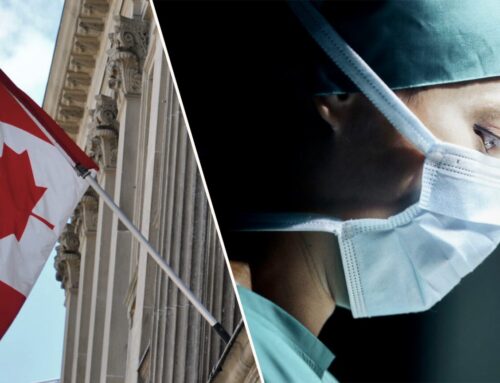Lauren Boothby
Published:September 6, 2021
-Edmonton Journal
Alberta has cancelled plans to end routine COVID-19 swab testing and isolation rules amid a rising fourth wave, as it also ramps up coronavirus sewage monitoring to cover most of the province by Oct. 1.
Chris Bourdeau, an Alberta Health spokesman, told Postmedia on Sunday testing people with COVID-19 symptoms will continue in its current form past Sept. 27. This is the second time the government has reversed course on halting routine testing. Cases have surged in recent weeks, as has criticism of the province’s plans to end COVID-19 protocols like testing, tracing and isolation.
Bourdeau also confirmed Monday that 10-day mandatory isolation for those who test positive for COVID-19 or who have symptoms, as well as mandatory masking orders in public transit, taxis and ride-shares, will remain in place beyond Sept. 27. A new date to end these rules hasn’t been set.
Alberta brought back an indoor mask mandate and liquor sales curfew on Friday.
Virus levels in sewage
Meanwhile, another way of tracking the waves of the pandemic is growing next month.
University of Alberta researchers have confirmed that they, along with the University of Calgary, will be expanding the wastewater testing programs to cover about 70 per cent of the population of Alberta. Samples collected measure the concentration of SARS-CoV-2 — the virus that causes COVID-19 — found in sewage at wastewater collection points.
This will include major and mid-sized cities with more than 50,000 people, some small cities or large towns, some First Nations communities, as well as spot testing for some high-risk settings like jails. The program is backed by the provincial government but funding details are still being firmed up.
Experts behind the project say this kind of monitoring does not replace clinical testing.
Steve Hrudey, one of the researchers behind the U of A study, says watching to see when gene copies from the virus start to spike can serve as an early warning. These levels rise shortly before the number of reported COVID-19 cases starts going up.
Unlike swab testing that requires people to sign up, sewage samples include nearly everyone, and if they have the virus it will show up in waste even before they have symptoms.
“Every toilet that flushes in the city of Edmonton ends up at the Gold Bar Wastewater Treatment Plant … people will shed the virus in feces so it shows up in wastewater while they’re still asymptomatic,” said Hrudey, who is a professor emeritus in the U of A’s laboratory medicine and pathology department.
He said the data is most useful for tracking trends, which follow the waves discovered with clinical testing.
“We’re measuring a signal of how much virus is out there … the trends over time are very consistent,” he said.
But Hrudey cautioned that wastewater testing can’t identify the individuals who are sick, how many people are infected, vaccination status, or how sick each person is.
“Wastewater testing is not, I repeat not, N-O-T, a replacement for clinical testing. Never. Not intended to be, and definitely is not an alternative,” he said.
In an email, Bourdeau said individual testing and wastewater monitoring are two different ways the government is looking at the impacts of COVID-19 on a region, and sewage testing gives public health officials insight into the level of the virus in a community.
“In fact, it can provide more accurate data on the intensity of COVID in a community, where individual testing only reflects the results of those who choose to get tested,” he said. “We know that there are individuals who have COVID but never get tested, so they are unreported.”
He said other types of virus surveillance are “used together to provide public health with the information it requires to monitor the pandemic and transition to endemic COVID 19.”
The University of Alberta has also been working on a similar study monitoring for outbreaks in long-term care by sampling manholes directly connected to a site. Researchers also hope this type of testing could be used to monitor other viral outbreaks in the future.
Virus levels high
Lilly Pang, one of the U of A study’s principal investigators, said in an email that generally the amount of virus in the water increases between five and seven days before the number of reported cases start to climb.
Her lab considers the amount of virus in a community to be low and undetectable when samples show fewer than 100 copies of SARS-CoV-2 RNA per 100 millilitres, and very high over 10,000.
The most recent tests done in the U of A’s survey areas showed between 1,000 to 10,000 copies per 100 ml, with variations in the regions participating, she wrote.
In her town hall with doctors last month, chief medical officer of health Dr. Deena Hinshaw said AHS has been sharing wastewater testing results with municipalities, local health officials and the provincial government to help them make decisions throughout the pandemic.
The public will be able to see wastewater test results online, she said. The University of Calgary already hosts this data for the Calgary area on its website.




